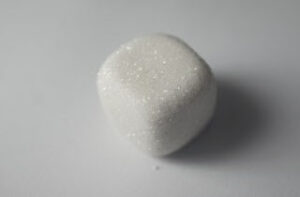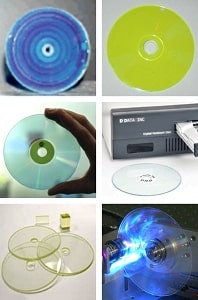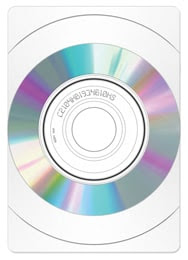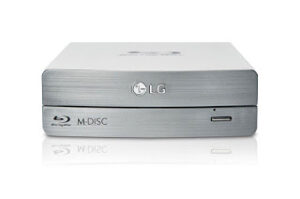Version 3.5






Following my blog adding some depth to the subject of energy cells, I thought I might give a similar treatment to that of storage media.
Transhuman Space 3e p.141:
“Portable data-storage units are teradisks (TDs). Each holds 10 TB and is the size of a sugar cube. $5, 0.01 lb. Old holodisks are still used on cheap machines (new systems can also run them): each holds 1 TB. $1, 0.01 lb.”
The relatively common availability of EMP devices significantly reduced the popularity of storage systems such as SD cards and USB thumb drives. Optical holodisks replaced them in many applications. Cubes and wafers were developed to meet the demand for more compact devices than holodisks.
Memory Cubes
It is feasible that “disk” may become a generic term for storage media of any form. (I still promise to “tape” films for my girlfriend!) If you feel this may be confusing, alternate names for TDs include info-cube, memory-cube, data-cube, holocube, teracube, archive block, teradice, info-die, memory-crystal, information-crystal and so on. A variety of terms will be in common usage, and the popularity of which are used may vary with region or community.

I am making the assumption that “size of a sugar cube” also implies that it is of a similar shape too. Incidentally, 0.01 lb is 4 grams, about the weight of a sugar cube. A cube is a space-efficient shape for a storage large.
Sometimes it is impressive what you cannot find on the internet! A credible statement of the dimensions of a sugar cube proved elusive. The claim a sugar cube has a volume of 4.93 mls gives a cube of 17 mm sides, which seems on the large side. Not having any sugar cubes handy, I examined some dice of similar size and decided to make a memory cube 14 mm across. Like many dice, a memory cube may have rounded corners.

I am assuming the memory cube is a holographic storage, so is made of transparent material. It is possible an actual holographic media will just look like glass. For THS, we might as well add some glamour and say its interior is iridescent with rainbow hues and some get used as ornamentation rather than their designed function. The surface of the cube can be engraved for identification. Reading devices automatically compensate for such legends or any other surface scratching. One side of the cube may be silvered. This silvering may have a coloured tint or show logos and symbols.
Cube Readers
There are a number of ways to read a cube. Many computers and similar devices have a reading deck, with a “glass” area on its upper surface. A cube is placed on a deck and the lasers and sensors beneath the glass read it. A basic deck has a “window” about an inch across. Better decks have a window of several inches and can simultaneously read more than one cube or card. Decks are also compatible with some other devices, allowing the device internal memory to be read without the need to remove it. More mobile computers have a small drawer into which one or more cubes are placed for reading. Such readers are preferred to decks in microgravity or weightless environments.
Memory Card/Wafer
One of the drawbacks of the memory cube is that it is a cube, making it too bulky for some applications. A memory card, data slip or “wafer” is 1.2 mm thick and 12 mm square with rounded corners. The edge of the card is reeded to make it easier to handle. A wafer resembles a slice of memory cube, although its sides are actually a shade shorter. The myth that a wafer can be made by slicing a memory cube persists in some quarters!
Many designs of memory cube reader can also read wafers. For a deck the card is simply placed on the reading surface. If a device lacks a cube reader compatible with wafers it may have a dedicated wafer reader instead.
A memory wafer holds 0.85 terabytes (850 gigabytes) and costs $1.75. Price often varies with local availability and can be as low as $1 or higher than $3. It would be misleading to simply think of a memory wafer as the 2100 equivalent of a micro-SD card. A memory wafer can hold a lot of information in a very compact space, facilitating many other applications.
He held up the tiny square of glass between finger and thumb:
“This is what you have been waiting for! Everything about the target. Floor plans, blueprints, personnel files, patrol schedules, everything!…there was a bit of space left, so I put some music and recipes on there too.”
Data Carriers
It was like an old pocket watch, but oval, deeper and narrower. So much depended on the information contained within.
The small size of cubes and wafers may be a problem, making them difficult to handle and easily lost. A wide range of carrying containers are available, most allowing the cube or wafer to be read without removal. A data carrier may communicate directly with a VII or wearable. Many data carriers therefore also serve as portable cube and wafer readers. The terms “reader” and “carrier” may be used interchangeably, but not all carriers are readers.
Examples of data carriers include those shaped like decorated pillboxes, fob-watches, chess pieces, netsuke, pendants, sagemono, mini-bots, key-rings, medals, medallions, challenge coins and similar objects. Such objects may incorporate other devices such as locators or security measures.
Holodisks
Holodisks are an older format of storage media that is still widely used. It would be unusual to find a Fourth or Fifth Wave household that does not have at least one holodisk player.

A holodisk resembles a modern CD or DVD disc, but is transparent. Being holographic, it is much less vulnerable than a CD or DVD to becoming non-functional due to scratches or surface damage. Like CDs and DVDs it must be spun for reading and has a 15 mm central hole for this purpose. Material intended for the developing world or less advanced regions is often placed on holodisk.
Two sizes of holodisk are commonly encountered. 120 mm diameter discs hold 1 TB of information, cost $1 and are the same size as an old CD. 80 mm diameter discs are handier for many applications and are correspondingly more common than other non-120mm sizes. An 80 mm disc holds 0.42 TB/ 420 GB. Standard holodisk readers are designed for both 120 mm (“one-twenties”) and 80 mm (“eighties”) discs.

A holodisk reads from the centre outwards, so any size less than 120 mm but usefully larger than the central hole is possible. 100 mm discs are sometimes encountered, and more rarely discs of 25-40 mm diameter. Very small discs are sometimes called “slugs” or “coins”. Discs that are not eighties or one-twenties may need to be placed in an adapter to be read by certain players. An adapter resembles a 120mm disc with central well of appropriate size.



Holodisk Readers
A typical holodisk reader is about 15 centimetres square and 2 to 6 cm high. Weight is less than half a pound. It usually includes an internal, rechargeable C cell or several B cells so that it can be used when not plugged into a power outlet. Newer models have interfaces for cubes and wafers ("multireaders") and can copy data directly between discs and these media. An internal buffer memory of 0.4 to 1TB capacity is another common feature. The holodisk unit may also be one of a household’s cube and wafer readers.
Many holodisk readers are backwards compatible with non-holographic optical discs such as the various forms of CDs, DVDs and Blu-ray discs. Software to bypass DVD region coding is standard. The capability to read older formats may be useful for historians and other researchers. Sadly many optical discs produced in the earlier decades of the century have exceeded their shelf-life and deteriorated with time. Good copies may be valuable to interested parties.
Cheaper holodisk players, or those intended for specific purposes, may lack compatibility with optical discs. Pirated copies of players may claim compatibility but be variable in performance or non-functional for such discs.


Playable/ Interactive Cards
In some communities etiquette still demands the exchange of physical business cards. Playable business cards (b-cards) are popular in such circles. A card can be played by placing it in a normal holodisk reader. Content is usually promotional material and web-links.
Since a holodisk needs to be transparent it has limited applications for business cards. Playable business cards instead use optical disc technology so they have can have a reflective side and a printed side. Cards may also incorporate other storage mechanisms such as magnetic-stripes, OCR characters, RFID, TFID, barcodes or QR codes. Some even have animated video displays, v-tags or nanodots. Hence they are sometimes referred to as “multi-media” cards. One corner of the card may be shaped differently for orientation in certain reading systems. The optical storage capacity is a relatively modest 4 GB but this is adequate for the sort of content usually placed on such cards. It is not possible to incorporate a memory wafer into a working playable card.
Playable cards see other applications. A musical group might promote itself by handing out cards. Content would include sample tracks, videos, a calendar of future appearances and web-links. Cards may also be used as coupons, for loyalty schemes, as hotel room keys and for some security passes.
Petatiles
The Brainman handed Poole a small square, apparently made of glass, silvered on one surface; it was almost the same size as the computer diskettes of his youth, but twice the thickness. As Poole tilted it back and forth, trying to see into its transparent interior, there were occasional rainbow-hued flashes, but that was all.
He was holding, he realized, the end product of more than a thousand years of electro-optical technology – as well as other technologies unborn in his era. And it was not surprising that, superficially, it resembled closely the devices he had known. There was a convenient shape and size for most of the common objects of everyday life -knives and forks, books, hand-tools, furniture… and removable memories for computers.
'What's its capacity?' he asked. 'In my time, we were up to a terabyte in something this size. I'm sure you've done a lot better.'
'Not as much as you might imagine – there's a limit, of course, set by the structure of matter. By the way, what was a terabyte? Afraid I've forgotten.'
'Shame on you! Kilo, mega, giga, tera… that's ten to the twelfth bytes. Then the petabyte – ten to the fifteenth – that's as far as I ever got.'
'That's about where we start. It's enough to record everything any person can experience during one lifetime.'
3001, Arthur C. Clarke.
Arthur C Clark: I was astonished to read in a newspaper on 19 July 1996 that Dr Chris Winter, head of British Telecom's Artificial Life Team, believes that the information and storage device I described in this chapter could be developed within 30 years!…Dr Winter states that it would allow us to 'recreate a person physically, emotionally and spiritually', and estimates that the memory requirements would be about 10 terabytes (10e13 bytes), two orders of magnitude less than the petabyte (10e15 bytes) I suggest.
The petatile is used to transport programs and data that are too big to be carried on a teracube. This includes copies of ghosts, shadows and some xoxes.
The petatile resembles a glass square, 90mm to each side and 7mm think. One large face is silvered and may be marked with symbols, logos or written information.
Petatiles are relatively rare. Most would-be users do not need so much capacity. Price reflects rarity and low-demand, so a petatile may cost anything from $350 to $800, depending on source or supplier.
Media Applications in 2100
One thing to understand is that portable storage media are used less in 2100. If someone wants a book, film, music track, game or program. they will download it directly from the web. Many people do this already, but by 2100 this will be the norm. Buying such items on a physical media would be unusual.
It is always prudent to have a back-up, however. Most Fourth or Fifth Wave citizens have at least one cube holding back-up copies of important or valued files. Cubes are readily available, reasonably priced, take up little space, are immune to EMP and resilient against many other threats.
Residents in the more distant space colonies cannot access the internet as readily as citizens of Earth or Mars. They have to download from more local sources. Visiting space vessels often carry a few cubes with the latest InVids, slinkies and any other information updates a community might want. This can include anything from celebrity gossip to the latest research papers. A pound or so of update cubes can be a compact but highly lucrative cargo. It is not unknown for a packet vessel to be used solely as a transport for just a consignment of update cubes.
Cubes, cards and discs have to be read by a reader. Storage media not inserted into a device cannot be read remotely. The only information it broadcasts is its v-tag, if any. Information on storage media is therefore “air-gapped”, so cubes and other media are often used to store information that is too sensitive to leave on a machine that might be remotely accessed.
Similarly, cubes and other physical media are used to move information that one would not wish to transmit across the web.